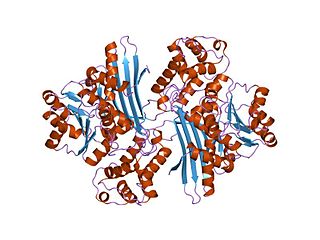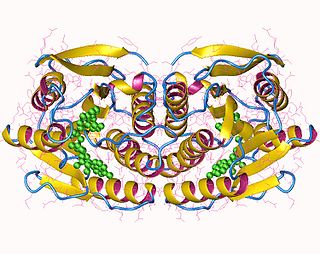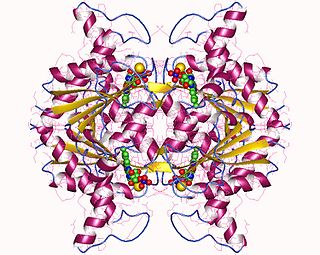| Phosphonoacetaldehyde reductase (NADH) | |||||||||
|---|---|---|---|---|---|---|---|---|---|
| Identifiers | |||||||||
| EC no. | 1.1.1.309 | ||||||||
| Databases | |||||||||
| IntEnz | IntEnz view | ||||||||
| BRENDA | BRENDA entry | ||||||||
| ExPASy | NiceZyme view | ||||||||
| KEGG | KEGG entry | ||||||||
| MetaCyc | metabolic pathway | ||||||||
| PRIAM | profile | ||||||||
| PDB structures | RCSB PDB PDBe PDBsum | ||||||||
| |||||||||
Phosphonoacetaldehyde reductase (NADH) (EC 1.1.1.309, PhpC) is an enzyme with systematic name 2-hydroxyethylphosphonate:NAD+ oxidoreductase. [1] This enzyme catalyses the following chemical reaction
- 2-hydroxyethylphosphonate + NAD+ phosphonoacetaldehyde + NADH + H+
The enzyme from Streptomyces viridochromogenes catalyses a step in the biosynthesis of phosphinothricin tripeptide, the reduction of phosphonoacetaldehyde to 2-hydroxyethylphosphonate.






